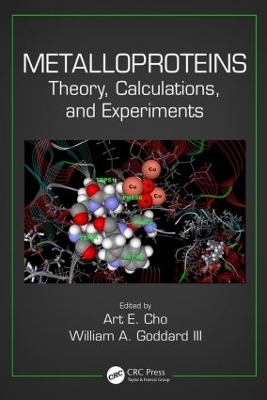
Metalloproteins
Crc Press Inc (Verlag)
978-1-4398-1318-8 (ISBN)
Numerous essential biological functions involve metalloproteins; therefore, understanding metalloproteins and how to manipulate them is significant in the biological and medical fields. An examination of current research, Metalloproteins: Theory, Calculations, and Experiments explores the interplay between theory and experiment, detailing the role of theoretical modeling in the field and explaining how it aids experiments. The text also presents the current state of computational protein modeling, enabling researchers to adopt computation as an integral component of their studies.
This book addresses two different aspects on metalloproteins in unison. It reviews the development of theoretical and computational methods for metalloprotein simulation with specific examples. The authors also present some of the most intriguing and important experimental results on metalloprotein systems. Although a connection can be made between these two aspects of the research, the authors do not do so explicitly. Rather, they provide the platform required to ignite further collaboration between experimentalists and theoreticians.
A collection of works from top researchers in this field, the text presents diverse subjects that comprehensively reflect the current state of metalloprotein research. With these advances in structural information, theory and computation are starting to play a more significant role, particularly in identifying the reaction mechanism. The book summarizes some of the recent progress in both experiments and theory/computation showing the synergy that is now developing.
William Andrew Goddard III is the Charles and Mary Ferkel Professor of Chemistry and Applied Physics, and director of the Materials and Process Simulation Center at the California Institute of Technology. He earned his BS from the University of California, Los Angeles, in 1960 and his PhD from the California Institute of Technology in 1965. After his PhD, he remained at the California Institute of Technology as Arthur Amos Noyes Research Fellow (1964–1966), professor of theoretical chemistry (1967–1978), and professor of chemistry and applied physics (1978–). Dr. Goddard has pioneering methods for quantum mechanics (generalized valence bond theory, first principles pseudo potentials) and reactive fields molecular dynamics (ReaxFF and eFF), and complete sampling for protein structure prediction and docking (GEnSeMBLE and DarwinDock) which he has applied to many areas of chemical reaction theory, catalysis, materials science, and selective ligand design. He has been a member of the US National Academy of Sciences since 1984 and is a fellow (IAQMS, APS, AAAS, Am. Acad. Arts Science) or a member (ACS, MRS, Protein Society) of many other organizations. He was a cofounder of Materials Simulation Inc. and Schrodinger Inc. and continues with recent startups in electron etching of semiconductors (Systine) and design of therapeutics (GIRx). Art E. Cho is Professor in the Department of Bioinformatics, Korea University. He graduated from the University of California at Berkeley in 1988, with a double major in physics and mathematics. After completing the master’s program in mathematics at the University of Chicago, he pursued a PhD in physics at Brown University. Before finishing his PhD, he took time off and returned to his home country of Korea to fulfill mandatory military duty. As a substitution for service in the army, he worked as a senior research scientist at the supercomputing center of Samsung Advanced Institute of Technology affiliated with Samsung Electronics Co. After earning a PhD in physics in 2001, he worked as a postdoctoral scholar at Caltech and then as a research scientist at Columbia University. He also worked as an applications scientist at Schrodinger Inc. Since 2007, he has been at Korea University. In 2010, while taking up a departmental duty as the chair, he founded a startup company, named Quantum Bio Solutions, which specializes in computational drug design.
Introduction. History of metalloprotein science. Recent surge in theoretical methods for study of metalloproteins. Roles, importance of metalloproteins in biology. Structures. X-ray structures of various metalloproteins including heme binding proteins. Ferritin structures. Quantum chemical calculations for study of metalloprotein structures. Functions. Functions of various metalloproteins including cytochrome. Quantum mechanics based simulation techniques that are applied to study functions of metalloproteins. Interactions. Interactions of metalloproteins with ligands. Interactions of metalloproteins with other proteins. Interactions of metalloproteins with DNA/RNA. QM/MM (quantum mechanical/molecular mechanical) based docking methods to study metalloprotein interactions.
| Erscheint lt. Verlag | 8.5.2015 |
|---|---|
| Zusatzinfo | 10 Tables, black and white; 110 Illustrations, black and white |
| Verlagsort | Bosa Roca |
| Sprache | englisch |
| Maße | 156 x 234 mm |
| Gewicht | 589 g |
| Themenwelt | Medizin / Pharmazie ► Physiotherapie / Ergotherapie ► Orthopädie |
| Technik ► Medizintechnik | |
| ISBN-10 | 1-4398-1318-3 / 1439813183 |
| ISBN-13 | 978-1-4398-1318-8 / 9781439813188 |
| Zustand | Neuware |
| Informationen gemäß Produktsicherheitsverordnung (GPSR) | |
| Haben Sie eine Frage zum Produkt? |
aus dem Bereich


